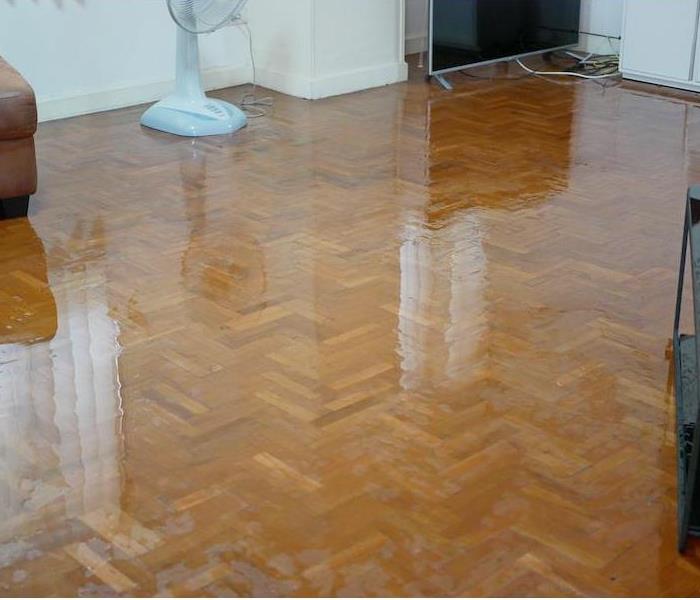What Materials Are the Most Damaged After a Flood in My Newark Home?
8/31/2020 (Permalink)
Flooding can cause substantial damage to many exposed structural elements and construction materials, but some are affected more than others.
There is no mistaking the devastation that flood emergencies can cause Newark homes and businesses. This is part of the reason that professional restoration teams like our SERVPRO response team react so quickly to these conditions. While standing water itself can be rife with hazards and health concerns for those exposed, the threat to structural elements is also a major focal point for the responding recovery technicians that must be addressed as soon as possible.
There is no set assortment of flood damage that Newark homes experience every time one of these disasters strike, making each loss unique in some regard. While many practices to restore and recover a flood-damaged home might be similar, every property is an individual loss situation that gets thoroughly inspected during the initial job scoping phase. We have competent leadership with our project manager and crew chief to walk through a threatened home and determine the work that must happen, the equipment necessary, and which materials have become most heavily damaged from exposure.
Is Flooring Able to Get Protected After Flood Exposure?
Flooring is often one of the most sensitive materials to floodwater because standing water stays directly exposed to these materials the longest. Typically installed materials in your house's living areas, such as carpeting and hardwood flooring, do little to resist water penetration. The objective of responding technicians is to protect the flooring material, but if that is not possible, then the secondary goal becomes protecting subflooring materials. Reducing build back and reconstruction expenses can help these phases to complete more quickly. Some of the tools we use to address both top layer moisture and to protect the subflooring include:
- Drying Mats – Drying mats are a powerful tool ideal for either saturated wood plank flooring or on the subflooring material. These mats work together to pull moisture from an exposed surface at a controlled rate.
- Air Movers – The placement and positioning of air movers can provide a critical blast of heated air where it is necessary to begin evaporative drying. Air movers are also essential for practices such as carpet floating to dry the surface layer and padding simultaneously.
- Carpet Wands – One of the attachments for extractors that our team uses can be vital in removing water from carpeted floors. Much like hot water extraction cleaning, carpet wands pull water out of the fibers with forceful suction.
- Weighted Extractors – Using our technicians' weight, these extractors press materials together to force moisture to the surface for collection by an onboard vacuum system.
- Controlled Demolition – In some situations, physical damages have already begun when our SERVPRO professionals are notified of the emergency. When warping and swelling occur, the only solution for flooring is to remove it and reinstall it.
How Damaged Can Drywall Become After a Disaster?
Sheetrock is immensely porous, making it one of the most sensitive materials in your entire house to migrating water effects after a flood. When standing water settles around the base of a wall system, it can quickly get absorbed by the drywall, but then begin to wick up the wall even several feet beyond where the exposure on the surface stops. Often it is challenging to restore drywall, but the other elements of the wall system can usually get protected with practices such as:
- Positive Pressure Systems
- Air Movers
- Dehumidifiers
- Controlled Demolition
What Are the Immediate Threats of Saturated Ceiling Materials?
Ceiling materials can get damaged in a flood loss situation when areas like the roof allow for water penetration after a storm. Missing shingles or a partially collapsed roof system must get repaired or temporarily resolved with tarping before we can effectively remove flood damage. Our in-house team of contractors can help in that regard. Inside, they can also help with some of the threats to the structural elements of the house. Some of the risks that exist with water moving through ceiling materials include:
- Sagging/Collapse
- Water Damage to Lower Levels
- Microbial Growth
Does SERVPRO Rebuild After Storm Losses?
With a team of contractors at the ready on our roster, we can help to provide a seamless transition between the mitigation phases and the reconstruction and build back that your property needs. After severe storm losses, some degree of repair is often necessary. We have qualified contractors experienced in the building trades to help your home however it needs when disasters strike.
Floods can be worse on some materials than others. Our SERVPRO of Newark team can help you get the property back to its preloss condition after a loss, beginning with some of the most damaged structural elements. Give us a call whenever you need us at (302) 733-7933.






 24/7 Emergency Service
24/7 Emergency Service
